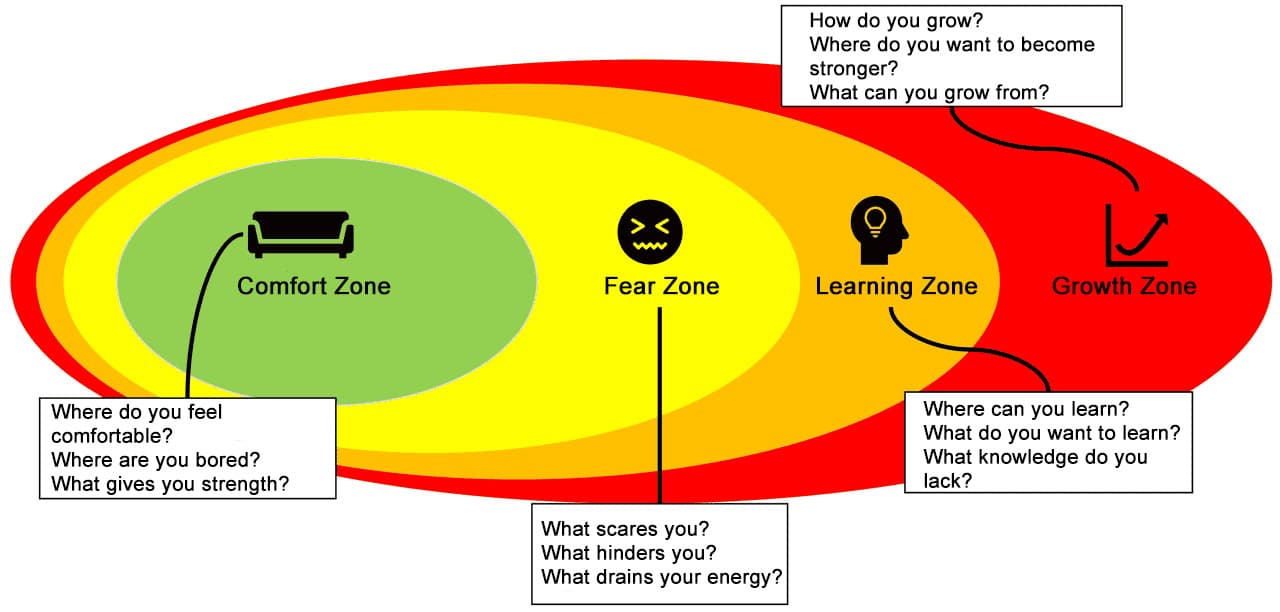Agility doesn’t work without resilience!
Everyone is talking about agility as a competence. Many long-established companies, even outside of IT, want to be as agile as start-ups in times of high market dynamics. They invest a lot of time, energy and money in transformations and the support of so-called agile coaches. Resilience plays a special role here, because it is a key factor for the sustainable functional agility of companies.
Agility and resilience – a brief clarification of terms
Agility is often understood as the ability to adapt to environmental changes and involves proactive participation in future developments.
Particularly noteworthy are the two essential cores of agility:
- Iteration and
- rapid feedback.
In contrast to traditional project management, agile project management works in short sprints and cycles. It is not about drawing up big plans that are subsequently worked through for months or even years, but about a step-by-step approach on sight. In addition, the focus is on people, and regular feedback and an open learning culture form the basis for joint work.
Resilience is the competence of a system to maintain its own essence in the face of damaging environmental influences. “Resilience 2.0” places particular emphasis on flexibility and understands crises as opportunities for growth. The combination of economics and psychology should be emphasised:
- People and their needs may be placed at the centre.
- And: Resilience enables further development, as those involved grow from challenges.
Agility tends to have a more offensive connotation and resilience a more defensive nature. Similar to martial arts, however, no clear distinction can be made. Quite in the sense of: Offence is the best defence.
The connection between the two future competencies is very strong: Agile companies can adapt to market dynamics and thus survive setbacks. Resilient companies are not immediately knocked down by changes. The knowledge of agility and resilience as well as their interdependence helps companies to successfully survive in a dynamic market environment. Synergy effects may be used, central components strengthened and the basis for economic success created. To remain in the image of martial arts: Footwork pays off both on the attack and on the defence.
Why do agile transformations fail?
Based on Digital.ai’s 15th Annual State Of Agile Report¹ with 1,380 participants worldwide, the following challenges in agile transformations can be identified:
- inconsistency of processes 46%
- cultural conflicts with agile values 43%
- resistance to change 42%
- lack of experience with agile 42%
- lack of leadership participation 41%
- inadequate management support 40%
- lack of training and education 40%
- penetration of traditional approaches 35%
- lack of business/customer/product 31%
- scattered tools and data 30%
- lack of learning culture 22%
- little collaboration and shared knowledge 17%
- legal or political problems 13%
For me, the first thing that becomes obvious is that a cultural and organisational foundation must be in place. Introducing agility means effort, and it is easy for a sense of chaos to arise in the transformative phase. Unfortunately, with an excessive resistance to change, change will not be possible.
In many conversations I was told of a lack of experience with agility, yet I would put this point in brackets, because anything that is new could not otherwise be learned, since by definition there can be no experience yet with new topics.
Agile transformations are in one respect analogous to cleaning a staircase. Ideally, you start at the top step, symbolic of management, and work your way down step by step. If the top step is blocked, the work becomes much more difficult. For this reason, in my opinion, the points “lack of leadership participation” and “inadequate support from management” are particularly serious.
There is also often an attempt to “impose” agility; this is clear from the point “lack of training and education”.
And the challenges mentioned, such as “penetration of traditional approaches”, “lack of business/customer/product”, “scattered tools and data”, “lack of learning culture” and “little collaboration and shared knowledge” are also found relatively often in companies. If these companies are also diffuse and poorly positioned due to internal problems, the path to the next performance level is relatively long. Furthermore, deliberate rigidity is also a massive problem for change, especially when external aspects such as legal or political obstacles can also be relevant.
From the comfort zone to the growth zone
Basically, we leave our comfort zone in transformations. According to the 4-zone model, the fear zone “lurks” after the comfort zone. Our brain favours routine because it can save energy through it. Saving energy is a factor in human evolution that is essential for survival. It is worth remembering that the brain makes up about 5% of the total human weight, but consumes about 20% of the total energy. So thinking a lot takes a lot of energy. We therefore need sense and, consequently, courage to face our fears. The essential goal is self-confidence in one’s own abilities to deal with new stressors and to grow with them. Those who face their fears can learn and grow from them.
How does true agility emerge?
In agile work, short feedback loops and fast iteration cycles are a necessary essence. In addition, there is a culture of experimentation and dealing with criticism.
However, voicing and experiencing criticism requires more than you might think. The concern of hurting someone else or being hurt by the other person’s reaction is often found in practice. However, mirroring, identifying blind spots and even sparring is not possible as an individual. Following constructivism, a possible conflict may be approached in a way that is profitable for all involved.
Producing results in the shortest possible time, which are then also jointly evaluated, can also create considerable pressure. Shared knowledge is known to be double knowledge. Here, too, the fear of being punished, ostracised or ridiculed for mistakes plays an important role.
Only when employees feel entitled to try out new things, to find solutions independently and to organise the necessary resources themselves, can a culture of experimentation develop. Supposed setbacks are interpreted as opportunities for growth through a resilient attitude. Only in this way can real agility emerge.
Conclusion
Agility is a significant trend in turbulent times. That the only constant of our times is change is evident every day. Unfortunately, it is not enough to define or mandate agility as such. Superficial measures do not attack the roots and accordingly often do not have a lasting enough effect. Deep problems in the culture of the company, whether at the communication or organisational level, significantly hinder change. This is where the company’s own resilience must first be built up.
Self-leadership is needed not only to empower employees and take them along, but to strengthen them in such a way that they develop themselves. Without a resilient attitude, with which mistakes are turned into learning successes, employees often do not even dare to step out of their comfort zone. Necessary impulses are thus avoided and learning cannot take place. Or to summarise: Agility doesn’t work without resilience.
Notes:
Tim Robert Zander likes to describe the combination of agility and resilience with the word start-up spirit (Start-up-Geist). An approach that is designed to move forward and uses falling down to learn, so that constant progress becomes possible.
If you want to learn more about Tim Robert Zander and the start-up spirit, you could subscribe to his readable German newsletter on LinkedIn or drop by resilienz.consulting.
If you like the post or want to discuss it, feel free to share it with your network.

Tim Robert Zander
Tim Robert Zander is a young entrepreneur working in the field of consulting, training and education. During his studies at the Technical University of Berlin, he began to acquire funding to research change management projects, develop sustainable solutions and reform teaching. With excellent results and the desire to make an even greater social impact, he entered the start-up world. There he founded his own ventures several times and accompanied founders on their way. Through the many projects, he was able to learn a lot, build up skills and develop a sense of start-up spirit.
Tim Robert Zander currently works as a co-founder in Agility Consulting and Resilience Consulting. His focus is on the connection between agility and resilience. He uses this to realign companies in sales or marketing, for example, or to train managers as resilience coaches in business. He also acts as a sparring partner for entrepreneurial fitness and works as a boxing coach. He combines all this under the personal brand Start-up-Wikinger” (“Start-up Viking”).
